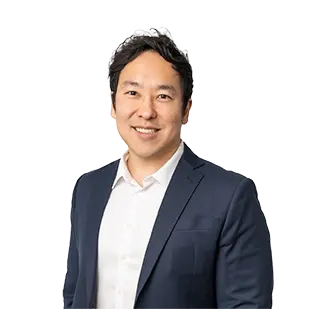Atraumatic Tooth Extraction
A gentler way to a healthier smile.
.png?width=1325&height=1053&name=extraction%20(1).png)
What Is Atraumatic Tooth Extraction?
Sometimes, a tooth is too damaged or decayed to be saved and in those cases, removing it might be the healthiest option. At Dental Designs Clinic, we understand that the idea of a tooth extraction can feel a little daunting, which is why we approach it with as much care as possible.
Our philosophy is to always try to help you save your tooth as much as possible. But when removal is necessary, we use atraumatic extraction techniques. This means protecting the surrounding gums and bone, so your recovery is smoother and less painful.
For healthy healing outcomes, we also offer Socket Preservation. Much of the post-extraction pain is due to the empty hole that the body must heal over. Socket preservation fills this empty tooth socket with a bone graft material, thus minimising discomfort and promoting healing.
When Is Tooth Extraction Necessary?
While our dentists always aim to preserve your natural teeth and only consider extraction as a last resort, there are situations where extraction becomes inevitable as it remains the only feasible option. Here are reasons why extraction may be necessary:
.png?width=1325&height=1053&name=extraction%20(12).png)
Advanced Gum Disease
Advanced gum disease can damage the supporting structures around a tooth, including the bone, causing tooth to become very loose.
.png?width=1325&height=1053&name=extraction%20(8).png)
Severe Tooth Decay
When decay has progressed deep into the tooth and surrounding bone, the tooth may no longer be restorable, thus requiring removal.
.png?width=1325&height=1053&name=extraction%20(10).png)
Infection or Abscess
If a tooth develops a serious infection and doesn’t respond to treatment, it can spread to other areas. Removing the tooth eliminates the source.
.png?width=1325&height=1053&name=extraction%20(9).png)
Fractured or Broken Teeth
Sometimes trauma or wear causes a tooth to crack below the gum line or into pieces, making it challenging to restore reliably or save.
.png?width=1325&height=1053&name=extraction%20(11).png)
Orthodontic Reasons
In some orthodontic cases, teeth are removed to create space and achieve alignment. This is done to support overall health.
Do I Need Atraumatic Tooth Extraction in Singapore?
Atraumatic tooth extraction is a technique to remove a tooth while carefully preserving the bone and gum tissue around it. It can support faster healing, reduce discomfort, and lower the risk of complications.
This method is especially helpful for front teeth or areas where maintaining the natural gum shape is important. Even if you’re not planning to replace the tooth right away, preserving the bone gives you more options later and helps keep your smile looking its best.
Benefits Of Atraumatic Tooth Extraction
Atraumatic tooth removal is a less invasive alternative to traditional extraction methods. Instead of applying force, the tooth is carefully loosened using specialised tools, which helps reduce strain on the surrounding gum and bone.
aa.png?width=600&height=465&name=Rotate%20-90%20degree%20(31)aa.png)
By minimising trauma during extraction, this technique helps maintain the height and width of the surrounding bone and the natural contours of the gums. This approach is particularly helpful when planning for future treatments like dental implants, as it helps preserve the natural structure of the jaw.
Atraumatic extraction decreases the likelihood of damaging adjacent teeth, nerves, or sinus cavities. It also lowers the risk of postoperative complications such as infections or dry sockets.
The gentle nature of the procedure promotes faster healing and allows for a quicker return to normal activities. Patients often experience less postoperative pain, swelling, and bleeding.
Maintaining the natural bone and gum structure ensures better aesthetic results, particularly important for visible areas of the mouth. It also simplifies future restorative procedures by providing a stable foundation.
How Does Atraumatic Tooth Extraction Differ from Traditional Methods?
|
|
Atraumatic Tooth Extraction Methods |
Traditional Extraction Methods |
What It Means |
|
Minimally Invasive Technique |
Uses fine tools to gently loosen tooth |
Often involves more forceful removal |
Tools like periotomes are used to carefully separate the tooth from the socket with less pressure, lowering the chance of tissue damage |
|
Bone Preservation |
Preserves more bone and tissue |
More likely to damage bone/gums |
Atraumatic techniques are performed to minimise trauma to the jawbone and gums, helping to keep your mouth in better condition for future treatments |
|
Healing Time |
Faster recovery |
Longer healing time |
With less disruption to the surrounding areas, the healing process is generally quicker and smoother |
|
Comfort After Procedure |
Less post-operative discomfort |
Higher risk of post-operative symptoms such as swelling and pain |
Patients usually experience reduced swelling, pain, and bruising with atraumatic methods, leading to a more comfortable recovery |
Feature
Number of implants needed
Implant placement
Implant angulation
Need for bone grafting and other surgical procedures like sinus lift and nerve repositioning
Treatment timeline
Traditional Implants
Requires one implant for each missing tooth
Implants have to be placed where the individual tooth is missing
Align with adjacent teeth and supporting bone
High probability, especially if sufficient bone is not present to support the implant, or vital structures like nerves and sinus membrane are in close proximity
Have to wait for a healing period of 3-6 months before artificial teeth can be placed
All-on-4 Implants
Requires 4 implants to replace an entire jaw of missing teeth
Implants are strategically placed in areas of jawbone with the highest bone density
Two implants at the back are placed at 30-45 degrees
Less probability of requiring adjunct surgical procedures
You receive your temporary artificial teeth immediately after placement of the implants
What It Means If You Choose All-on-4
Overall cost of treatment is reduced
Stable implants and artificial teeth
Stress from daily activities such as chewing and swallowing is distributed efficiently
Overall cost of treatment is reduced, less recovery time and less stress for patient
Patient receive their new teeth on the same day as surgery
Feature
Number of implants needed
Implant placement
Implant angulation
Need for bone grafting and other surgical procedures like sinus lift and nerve repositioning
Treatment timeline
Traditional Implants
Requires one implant for each missing tooth
Implants have to be placed where the individual tooth is missing
Align with adjacent teeth and supporting bone
High probability, especially if sufficient bone is not present to support the implant, or vital structures like nerves and sinus membrane are in close proximity
Have to wait for a healing period of 3-6 months before artificial teeth can be placed
All-on-4 Implants
Requires 4 implants to replace an entire jaw of missing teeth
Implants are strategically placed in areas of jawbone with the highest bone density
Two implants at the back are placed at 30-45 degrees
Less probability of requiring adjunct surgical procedures
You receive your temporary artificial teeth immediately after placement of the implants
What It Means If You Choose All-on-4
Overall cost of treatment is reduced
Stable implants and artificial teeth
Stress from daily activities such as chewing and swallowing is distributed efficiently
Overall cost of treatment is reduced, less recovery time and less stress for patient
Patient receive their new teeth on the same day as surgery
-2.png?width=500&height=500&name=Simple%20(9)-2.png)
Socket Preservation: Preparing Your Smile for What’s Next
How Does Tooth Extraction Affect Your Oral Health?
After the tooth is extracted, a space is left between the teeth. Over many years, without treatment, the following long term consequences usually occur:
- The neighbouring teeth can start to tip or drift inwards towards the space. As this happens, food will get stuck under these teeth and it can be harder to clean.

- In most cases, the opposing tooth will also start to ‘grow’ or ‘super-erupt’ towards the space. Eventually, the tooth may end up loose or bite on the gum opposite it, and may also need to be removed.
- The bone around where the tooth used to be will gradually become less dense and may sink downwards.
If the above occurs, additional and more complex treatment may be needed before we can replace the missing tooth.
It’s a good idea to think about tooth replacement options to be done after extraction.

Replacement Options After Tooth Extraction
aa.png?width=1220&height=1220&name=Podcast%20Cover%20For%20Spotify%2c%20Square%20(1)aa.png)
Dental Implants
A dental implant is a titanium post placed in the jawbone to replace a missing tooth, offering a strong and fixed long-term option.

Dental Bridges
A bridge uses an artificial tooth anchored to adjacent teeth and is a good option if dental implants aren’t suitable.
ss.png?width=1025&height=1025&name=Podcast%20Cover%20For%20Spotify%2c%20Square%20(2)ss.png)
Dentures
Removable dentures, either partial or full, are used to replace missing teeth to restore function and appearance.
ddd.png?width=1200&height=1200&name=Podcast%20Cover%20For%20Spotify%2c%20Square%20(4)ddd.png)
All on 4 Implants
This full-arch restoration uses 4–6 dental implants to securely support a fixed denture for the upper or lower jaw.
aa.png?width=1220&height=1220&name=Podcast%20Cover%20For%20Spotify%2c%20Square%20(1)aa.png)
Dental Implants
A dental implant is a titanium post placed in the jawbone to replace a missing tooth, offering a strong and fixed long-term option.

Dental Bridges
A bridge uses an artificial tooth anchored to adjacent teeth and is a good option if dental implants aren’t suitable.
ss.png?width=1025&height=1025&name=Podcast%20Cover%20For%20Spotify%2c%20Square%20(2)ss.png)
Dentures
Removable dentures, either partial or full, are used to replace missing teeth to restore function and appearance.
ddd.png?width=1200&height=1200&name=Podcast%20Cover%20For%20Spotify%2c%20Square%20(4)ddd.png)
All on 4 Implants
This full-arch restoration uses 4–6 dental implants to securely support a fixed denture for the upper or lower jaw.
We can often place a new tooth on the same day as your tooth extraction, so you won’t have to go without
This means you can avoid the awkwardness of having a gap, especially in areas that show when you smile or speak. Rather than getting used to life without a tooth, you’ll leave the clinic with your smile complete, feeling more like yourself right away.
Process Of Atraumatic Tooth Removal At Dental Designs

1. Consultation
Prior to tooth removal surgery, a comprehensive x-ray of the jaw is conducted to determine the tooth's positioning, including the number of roots it has and whether they are curved or thin. Additionally, the x-ray helps identify important structures such as nerves, sinuses, proximity to neighboring teeth and the amount of bone present.
Our dentists will discuss treatment pros and cons as well as any risks specific to your treatment with you.

2. Anaesthesia Options
There are two main types of anaesthetic available for your tooth surgery:
- Local Anaesthetic: The most common of the three, only the area of the tooth is numbed and you are fully awake.
- Sedation: Intra-venous medication is administered, putting you in a sleep-like state.

3. Atraumatic Tooth Removal
Specialised instruments such as periotomes and luxators are utilised to gently sever the periodontal ligament, which is the tissue that holds the tooth in place, allowing for careful removal without exerting excessive force.
In some cases, additional procedures like socket preservation may be employed to further minimise trauma.

4. Review Check
A follow-up review will be scheduled about a week after the treatment.
During our follow-up review, the dentist will check in on how you are doing as well as on the progress of healing and if necessary, remove the stitches placed for tooth surgery.
Meet Our Doctors and Dental Lab Team Behind Atraumatic Tooth Extraction
Cost of Atraumatic Tooth Extraction in Singapore
The cost of atraumatic tooth extraction is determined by the individualised treatment plan created by the dentist for each patient. Costs can vary depending on several factors, such as the position of the tooth, its root shape and condition, surrounding bone structure, and whether the tooth is compromised by decay, infection, or fracture. Socket preservation helps to preserve bone for future treatments like dental implants, which can add to the complexity and cost.
During your consultation, your dentist will evaluate your specific situation and provide a detailed breakdown of the treatment plan and costs. This helps you understand what’s involved and make an informed decision about your care and budget.
For information on Wisdom Tooth Removal, please click here.
Starts From
$206.01*
| Tooth Extraction (Front tooth) | $206.01 – $263.78 |
| Tooth Extraction (Back tooth) | $457.80 - 907.97 |
| Surgical Extraction | $778.26 – 1,798.50 |
| Socket Preservation | $872 |
*Inclusive of 9% GST
Why Choose Dental Designs Clinic for Atraumatic Tooth Extraction?

Same day tooth replacement option
We understand that living with a missing tooth, even for a day, can be uncomfortable and inconvenient. That’s why we offer same-day replacement options so you can get back to eating, speaking, and smiling comfortably without a long wait.

Comfortable and Centrally Located
Our clinic is designed with comfort in mind, for a relaxing and enjoyable visit. Relax in plush chairs, listen to soothing music, and enjoy ceiling-mounted TVs. We’re also conveniently located, easily accessible by car or MRT.

Planning for What’s Next
Whether you're considering a dental implant or bridge, we plan your extraction with the next step in mind. This helps preserve your bone and gum shape, so future treatments fit and look more natural.
.png?width=53&height=53&name=image%20229%20(1).png)
Comprehensive Dental Care Services
We offer a full range of dental treatments, from checkups and cleanings to cosmetic and complex procedures, so you can get all your care in one place without needing to visit multiple clinics.
Hear From Our Happy Patients
The service and doctor is the best in town! The customer service and receptionists are very friendly! Dr Phillip Miller and Dr Noah Teo is very nice and very professional on their skill! They also very patient to explain to me about the treatment!
Will come back again!
Thank you very much!
李岳侨
J. Kho
This dental clinic has very good staff who are well trained and friendly. The dentists are also very good and will explain the treatment in detail before starting treatment. The equipment is very high tech and I believe they are able to do high quality work as I did my crown here and it looks much better than my colleague who also recently did his at another place. The waiting room is also very comfortable. good job!
C. Zheng De
This clinic is one of the best I have ever seen. I saw dr Justin for my implant which I did many years ago, the tooth was loose, and other drs told me to remove it as they could not find out what brand it was but dr Justin was able to take 3d xrays and locate the brand and specially ordered the part in. he saved me from having to do a surgery to remove and put a new implant which would have cost me a bomb. the tooth looks even better than the original thanks to the experieced dental technician Katsuya from Japan.
Very happy and will keep coming back for my regular dental.
G. Hock An
my workplace is close by and I had a problem with my tooth for a few days, so I made an appointment to come down. The receptionist who booked my appointment was very helpful and friendly to explain the way to the clinic from my office. I saw Dr Nicholas who was able to do a root canal treatment on the same visit so that I didn't need to come back. I felt safe and comfortable to do my dental treatment here as the dental picks are all wrapped up and sterilized and only opened before each treatment when im inside.
P. Wendy
Google Rating
Based on 1000+ Google reviews
Creating Smiles, Changing Lives
Over 28 reviews
The service and doctor is the best in town! The customer service and receptionists are very friendly! Dr Phillip Miller and Dr Noah Teo is very nice and very professional on their skill! They also very patient to explain to me about the treatment!
Will come back again!
Thank you very much!
李岳侨
J. Kho
This dental clinic has very good staff who are well trained and friendly. The dentists are also very good and will explain the treatment in detail before starting treatment. The equipment is very high tech and I believe they are able to do high quality work as I did my crown here and it looks much better than my colleague who also recently did his at another place. The waiting room is also very comfortable. good job!
C. Zheng De
This clinic is one of the best I have ever seen. I saw dr Justin for my implant which I did many years ago, the tooth was loose, and other drs told me to remove it as they could not find out what brand it was but dr Justin was able to take 3d xrays and locate the brand and specially ordered the part in. he saved me from having to do a surgery to remove and put a new implant which would have cost me a bomb. the tooth looks even better than the original thanks to the experieced dental technician Katsuya from Japan.
Very happy and will keep coming back for my regular dental.
G. Hock An
my workplace is close by and I had a problem with my tooth for a few days, so I made an appointment to come down. The receptionist who booked my appointment was very helpful and friendly to explain the way to the clinic from my office. I saw Dr Nicholas who was able to do a root canal treatment on the same visit so that I didn't need to come back. I felt safe and comfortable to do my dental treatment here as the dental picks are all wrapped up and sterilized and only opened before each treatment when im inside.
P. Wendy
Frequently Asked Questions on Atraumatic Tooth Extraction in Singapore
Whether it's due to severe decay, dental trauma, crowding, or other dental issues, tooth extraction is sometimes the best course of action to preserve your overall oral health.
Keeping the bone intact helps maintain your natural facial shape and is especially useful if you plan to replace the tooth with a dental implant in the future.
There are 3 main types of anaesthetic options for your tooth surgery:
a) Local Anaesthetic: The most common of the three, only the area of the wisdom tooth is numbed and you are fully awake.
b) Sedation: Intra-venous medication is administered, putting you in a sleep-like state.
c) General Anesthesia: Performed in a day hospital, it is the deepest form of sedation that renders you completely unconscious and unaware.
Many patients do experience faster and smoother healing because the surrounding tissues are less disturbed.
Cost can vary depending on the complexity of your specific case, but your dentist will explain the options during your consultation.
Atraumatic techniques can be used for both baby teeth and adult teeth and can be particularly useful to preserve the surrounding bone for future orthodontic needs.
Surgical removal of teeth is claimable under MediSave at Dental Designs Clinic. For child patients, you may also use the parents’ MediSave to claim for tooth surgery.
Straightforward removal of wisdom teeth are not claimable under MediSave. Please consult with your dentist to see which category your tooth falls under.
Gentle movements and specialised instruments are employed in this technique to remove the tooth carefully with as less damage as possible to any of the surrounding gums, bone and teeth.
If a missing tooth isn’t replaced, it can affect how you speak and chew, and may increase your risk of gum problems or jaw discomfort. Over time, nearby teeth can shift out of place, and the lack of support from the missing root may lead to changes in facial appearance, like sunken cheeks or a collapsed bite.
Tooth removal is usually considered only as a last resort when other treatments aren't suitable. Depending on your condition, options like fillings, root canal treatment, crowns, or gum therapy may help preserve the tooth and restore function. Your dentist will assess what’s most appropriate for you.
Get in Touch
We’d love to hear from you!
Schedule Appointment
Directly with our Online Booking Form















